Local News
Shaarey Zedek capital campaign is on pace to hit $17 million goal, but is hoping to obtain a further $2 million from donors
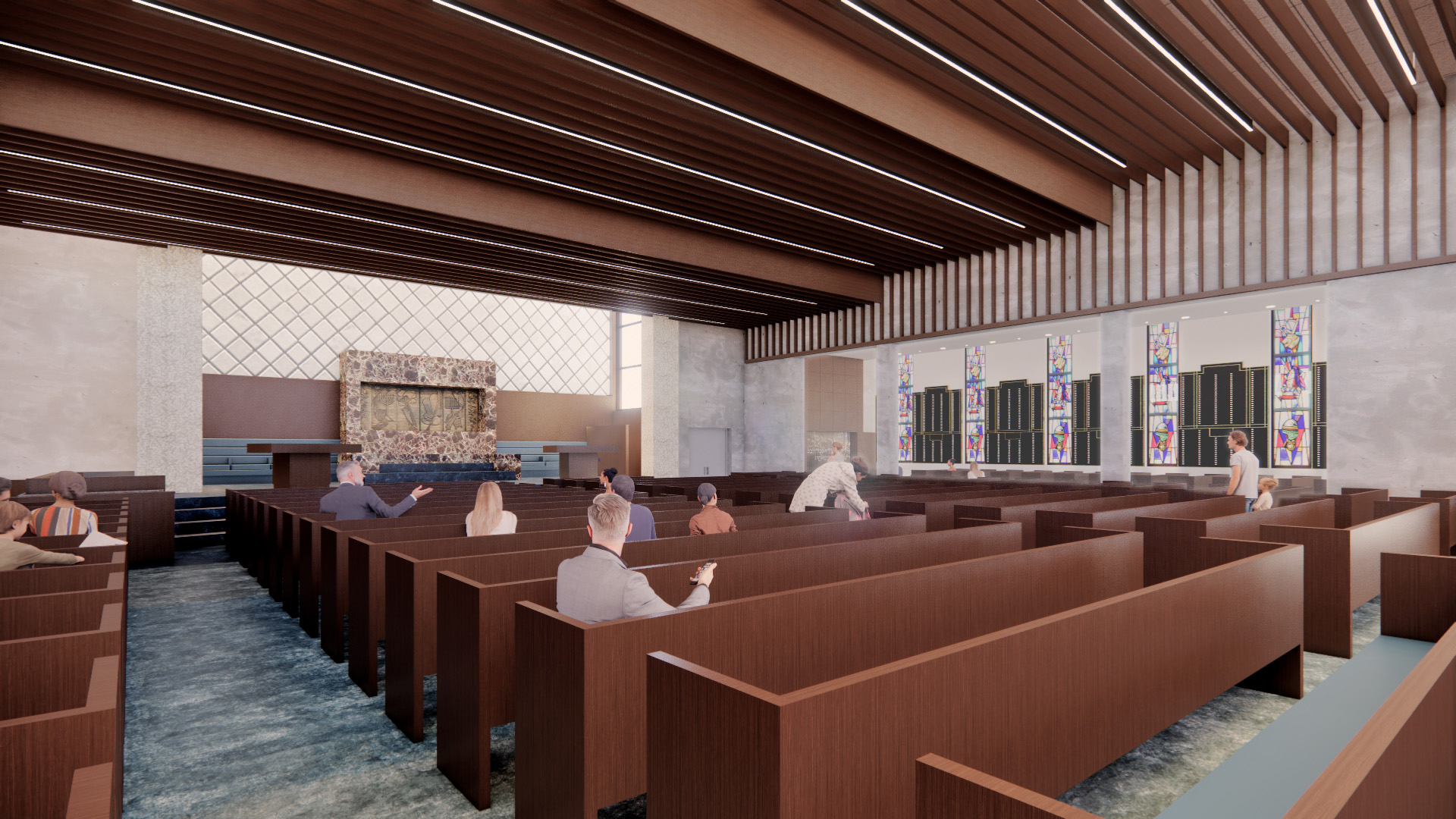
By BERNIE BELLAN It was in the October 27, 2021 issue of The Jewish Post & News that we first described the plan to renovate the Shaarey Zedek Synagogue. At that time the planned budget for the renovation was $14 million but, as with most construction projects these days, as costs have increased the total cost of the project has increased considerably.
The Shaarey Zedek website now contains the following information: “The Board previously approved an overall budget of $14 million in September 2021, representing an earlier projection of $12 million in hard costs and $2 million in soft costs. However, because of supply and inflation issues, as well as changes to the renovation plans, including the installation of an operable dumbwaiter (to replace the current inoperable one), as well as a daycare space, the current budget recently approved by the Board in August 2022, is $16 million.”
However, even that figure has now been supplanted by an even higher figure, according to Neil Duboff, Shaarey Zedek President and Chair of the L’Dor Va Dor Capital Campaign.
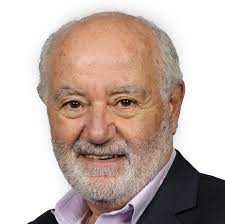
In an interview conducted with Duboff in his office on Monday, May 6, he said that the renovation project is now expected to cost $17 million. As Duboff explained, “All in, including architects, including furniture, including all of the soft costs, (the total cost) is going to be virtually what we always counted on, about 17 million.”
Of that $17 million though, the cost for a day care facility within the synagogue has not added to the overall goal of the capital campaign,” Duboff noted, as the $1 million for the daycare is being donated by the Vickar family, one of the very generous benefactors to our community.
As far as where the other $2 million in increased costs are coming from, Duboff explained that “what’s gone up is security has gone up. Windows have gone up…and one of the other things that has really gone up is AV. AV was more expensive, audio visual is more expensive than we counted on.”
In addition to those added construction costs, there is work being done to improve the drainage in the back. As Duboff explained, “The way I’m led to believe by the architects and engineers is we’ve had a flooding problem in the back. Water has, when it’s a really heavy rain, water comes in. So, it’s something that needed to be fixed regardless” (of the renovations to the building).
As well, during a tour of the renovations in which I was a participant (along with three others) on April 26, which was conducted by Shaarey Zedek Executive Director Rena Elbaze, Elbaze did say that the back entrance is going to be modified extensively – to make it quite a bit more welcoming than it had been previously.
I was quite impressed with how the construction is proceeding from what I saw during that tour, although upon reading the original timetable for completion of the renovations, I see that they were originally slated to be completed by this August. Elbaze assured that the renovations will be done by September 26 (for the community Kavod evening) – which would be a week in advance of the first day of Rosh Hashanah. (Fortunately for the construction crew, Rosh Hashanah is very late this year – which gives them quite a bit of a cushion to finish their work in case any unexpected problems crop up – as they usually do in projects this grand.)
During my interview with Neil Duboff, he was confident that the renovations will be completed well ahead of Yom Tov, saying “it could be as soon as August, and then they just have to make sure that our maintenance staff understands the building in terms of heating and air conditioning.”

The one aspect of the renovation though, that will probably not be completed will be the back entrance, Duboff noted. “One of the things that I was really pushing for is a grander entrance in the back,” he said.
“It’s going to have the same limestone as the front,” he noted “It’s going to be mirroring the front. The feeling of the front will be the feeling in the back.”
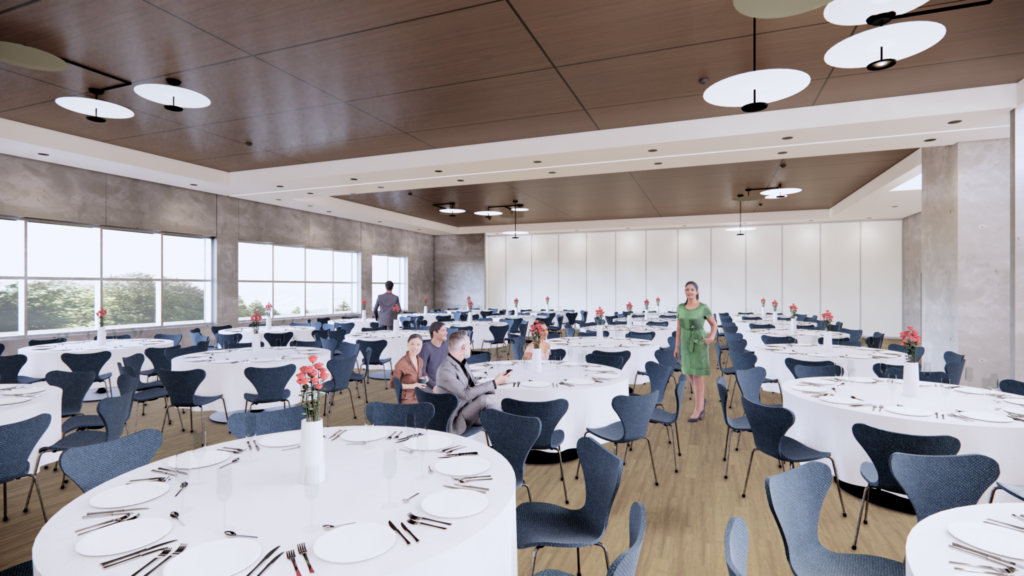
But, returning to the issue of finances, Shaarey Zedek members did receive a letter the first week of May in which they were told that the capital campaign is still $2 million short of what is now a $17 million goal. There was also a reference to the cemetery perpetual care fund which apparently left some congregation members concerned that funds set aside for perpetual care might be used for the renovation.
Duboff took the blame for causing some consternation among congregation members over the possible use of the perpetual care fund for the renovation. He said: “I don’t know if you can do this in a synagogue, but I’ll take a mea culpa. It was wrong. because all we were ever intending on doing is saving money by not borrowing money from the bank. That’s all it was ever intended to do. But the mistake that was made in that letter is it talked about the word perpetual care fund.” He added that there was going to be a meeting on May 8 in which the funding situation would be fully clarified for congregation members.
I asked Neil Duboff how much money exactly has been raised by the campaign. He did say that $3 million of the $17 million renovation cost is coming from the provincial government and that $12 million has been raised in pledges, but some of the individuals who have pledged to contribute to the campaign will be fulfilling their pledges over the next five years.
That does leave a bit of a “cash flow” problem, Duboff admitted. The congregation did approve taking out a “$9 million line of credit,” he added, and so far, “we haven’t used it at all,” he said.
And, while that line of credit is available, if necessary, the rate on that line of credit is approximately eight per cent. Shaarey Zedek does have investments, Duboff noted, but the average rate of return is “about five” percent, he said, which means we pay 8% and earn 5%. The goal of the board has been to find a way to avoid paying the approximately 3% interest costs charges in excess of what we earn.
The congregation also has a capital fund, Duboff explained, and $3 million from that fund has been used for the renovations, but Duboff said he’d like to “raise funds to put that back” because the “purpose of the fund” is to “sustain the congregation” to pay for things like “programming.”
One of the problems in raising funds, Duboff admitted, is that “some of our great philanthropists in our city still are considering their donations and need to kick the tire to believe the project and the future of the synagogue is real and viable. And we believe that when people come in to see the renovations and talk to the synagogue leadership, like Steve Kroft, (who was one of the people on the tour in which I participated on April 26) has now given a very, very generous gift.”
Yet, Duboff continued, “there are other people who are top donors in our city who haven’t. So some of the typical people you’d expect haven’t donated because they want to see if it’s real.”
I wondered though, whether the Shaarey Zedek’s not having a second rabbi will be an impediment to being able to grow the congregation – which would be necessary in order to sustain the congregation for the long term?
I said to Duboff that, during the tour Rena Elbaze conducted on April 26, she pointed to an area that will become an office for a second rabbi. I asked Elbaze: “So, you’re still looking for another rabbi?” She answered that she would fill me in on how the search is going, but as of the time or writing, Elbaze hasn’t responded to my request for further information.
The entire atmosphere surrounding the departure of Rabbi Matthew Leibl three years ago remains shrouded in controversy. Regardless what happened to lead to a parting of the ways between Rabbi Leibl and the Shaarey Zedek Congregation, there is no doubt that Rabbi Leibl’s leaving has had a negative impact upon the congregation.
You just have to take a look at the number of funerals, weddings, bar and bat mitzvahs at which Rabbi Leibl has officiated over the past four years to realize how immensely popular he remains as a rabbi within this community.
Neil Duboff isn’t the first person to whom I’ve suggested that it’s the congregation’s loss that Rabbi Leibl is not only not serving as a rabbi at the Shaarey Zedek, his being available to officiate at life cycle events outside of a synagogue venue and his having held High Holiday services at the Gates last year has been partly at the expense of the Shaarey Zedek in terms of people still making Rabbi Leibl their first choice for a rabbi in this city.
In response, Duboff said: “I think that the message has to be that I am a fan of Matthew’s. I think he does great work…
“But I have to sustain a strong Conservative synagogue. I can tell you that, regardless of who the Shaarey Zedek were to hire tomorrow, the synagogue, the congregation, the Shaarey Zedek, has to be bigger than a rabbi. Rabbis come and go. The institution doesn’t. Every synagogue is like that…
“Rabbis come and go. That’s the nature of an employee. But, it would be a tremendous solidifying thing, I think if Matthew would come back, I would open the door to it.”
Duboff admitted that there were conflicts between Rabbi Leibl and certain individuals (whose names he did divulge, but who will not be identified here), and that another prominent member of the congregation did reach out to Rabbi Leibl to see if there was a possibility of his returning to the congregation, but Duboff’s understanding is that “he’s not interested in working at the Shaarey Zedek.”
Looking ahead though, I wondered what the community’s demographics portend for the long-term future of the Shaarey Zedek? I said that I thought there would be an initial flurry of interest in coming to the Shaarey Zedek because of the novelty aspect – the same way Gray Academy attracted over 900 students the first year that the Asper Campus opened (in 1997), but that initial interest levelled off quickly after that first year.
And, with the Etz Chayim just having moved into new quarters on Wilkes, there is bound to be a competition between the two congregations for new members, I suggested. I asked Duboff whether, in hindsight, there should’t have been a merger of the two congregations 20 years ago when discussions of a merger ended in failure because of the apparent “culture clash” between the two congregations?
“Don’t you think that should have been the way to go?” I asked Duboff.
He agreed, saying “A hundred percent. I think that in our city, I still think at some point the congregations are going to have to join. Our city’s too small. And like you just said, there aren’t as many young families. When our generation goes, who are going to be the leaders?”
Local News
Thank you to the community from the Chesed Shel Emes
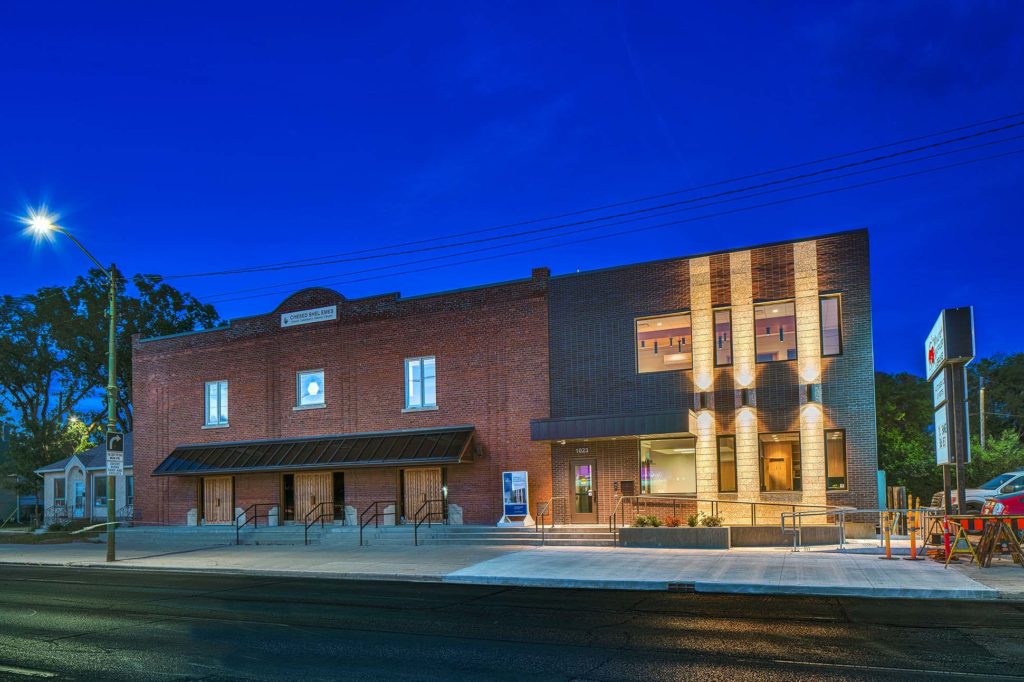
We’re delighted to share a major milestone in our Capital Campaign, “Building on our Tradition.” Launched in November 2018, this campaign aimed to replace our outdated facility with a modern space tailored to our unique needs. Our new building is designed with ritual at its core, featuring ample preparation space, Shomer space, and storage, creating a warm and welcoming environment for our community during times of need.
We’re grateful to the nearly 1,000 generous donors who contributed over $4 million towards our new facility. A $750,000 mortgage will be retired in November 2025, completing this monumental project in just seven years.
We’re also thrilled to announce that our Chesed Shel Emes Endowment Fund has grown tenfold, from $15,000 to $150,000, thanks to you, the Jewish Foundation of Manitoba’s FundMatch program, and Million Dollar Match initiative in 2024. Our fund helps ensure that everyone can have a dignified Jewish funeral regardless of financial need.
As we look to the future, our goal remains to ensure the Chevra Kadisha continues to serve our community for generations to come. Our focus now shifts to replenishing our savings account and growing our JFM Endowment fund.
We’re deeply grateful for your support over the past several years.
It’s our privilege to serve our community with care and compassion.
With sincere appreciation,
Campaign cabinet: Hillel Kravetsky, Gerry Pritchard, Stuart Pudavick,
Jack Solomon, and Rena Boroditsky
Murray S. Greenfield, President
Local News
Winnipeg Beach Synagogue about to celebrate 75th anniversary
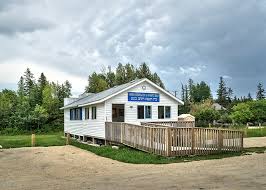
By BERNIE BELLAN (July 13) In 1950 a group of cottage owners at Winnipeg Beach took it upon themselves to relocate a one-room schoolhouse that was in the Beausejour area to Winnipeg Beach where it became the beach synagogue at the corner of Hazel and Grove.
There it stayed until 1998 when it was moved to its current location at Camp Massad.
On August 2nd members of the synagogue will be holding a 75th anniversary celebration.
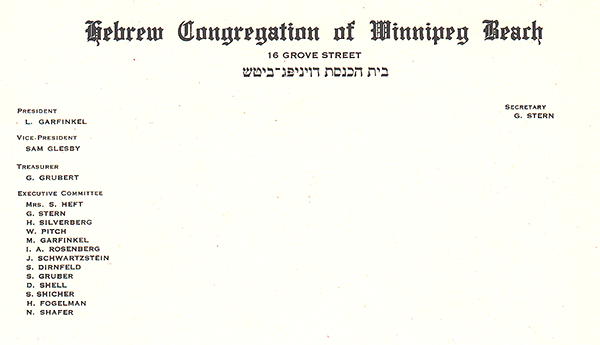
As part of the celebration anyone who is a descendant or relative of any of the original members of the first executive committee (as seen in the photo here) is invited to attend the synagogue that morning.
If you are a relative please contact Abe Borzykowski at wpgbeachshule@shaw.ca or aborzykowski@shaw.ca to let Abe know you might be attending or for more information about the 75th anniversary celebration.
We will soon be publishing a story about the history of the beach synagogue, which is something I’ve been writing about for over 25 years.
Local News
Vickar Family cuts ribbon on new Tova Vickar and Family Childcare Centre
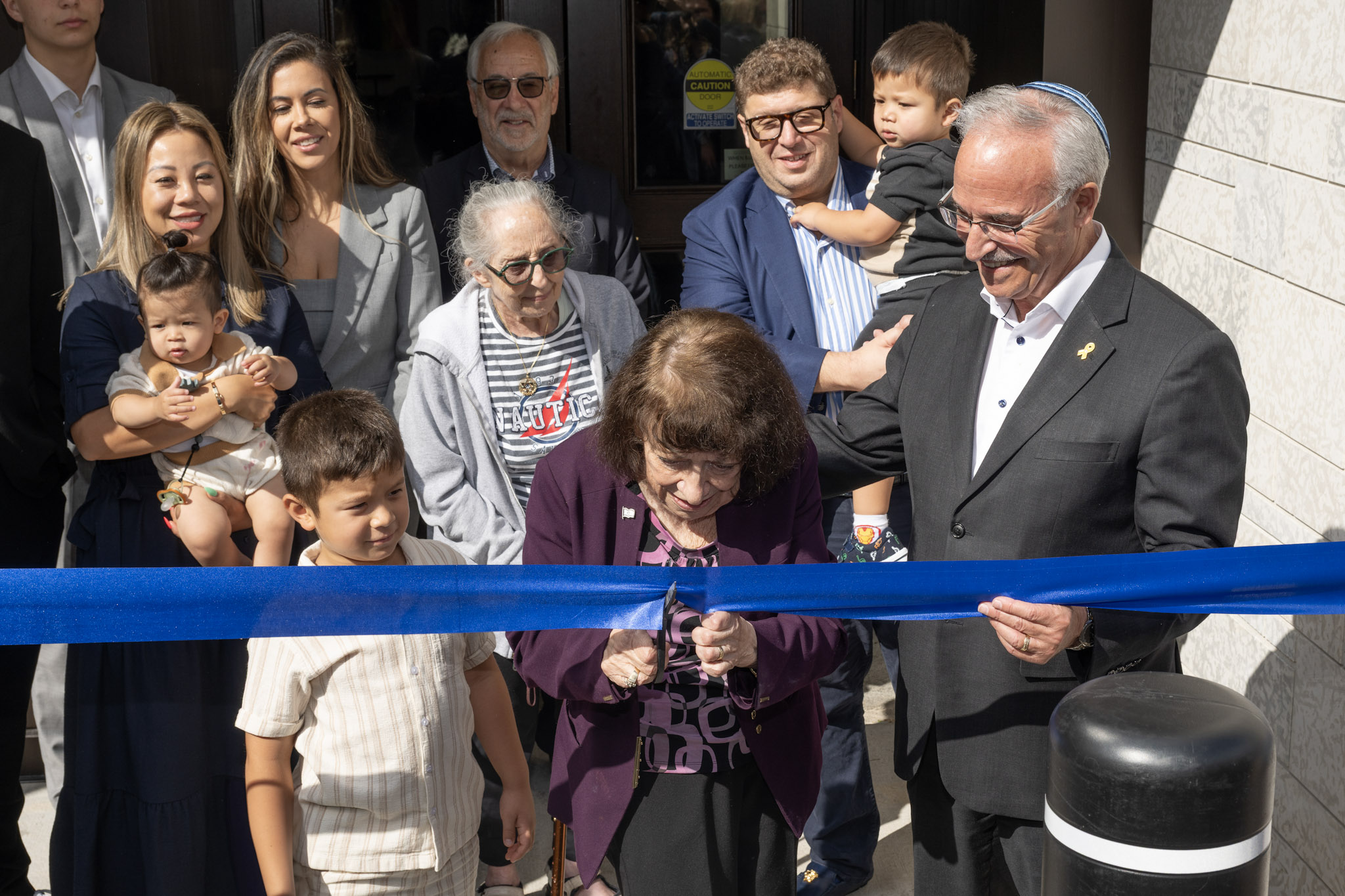
By MYRON LOVE In the words of Larry Vickar, the Shaarey Zedek’s successful Dor V’ Dor Campaign “is not only a renewal of the synagogue but truly a renewal movement of Jewish life in our community.”An integral part of that renewal movement was the creation of a daycare centre within the expanded synagogue. On Monday, June 23, Larry and Tova Vickar cut the ribbon, thereby officially opening the Tova Vickar and Family Childcare Centre in the presence of 100 of their family members, friends and other supporters of the project.
The short program preceding the morning ribbon-cutting began with a continental breakfast followed by a welcome by both Fanny Levy, Shaarey Zedek’s Board President, and Executive Director Dr. Rena Secter Elbaze. In Elbaze’s remarks, she noted that Larry and Tova wanted their family (including son Stephen and family, who flew in from Florida) and friends at the event to celebrate the opening of the Tova Vickar and Family Childcare Centre, “not because of the accolades, but because, as Larry put it, he hopes that their investment in the congregation will inspire others to do the same.”
“When Larry and I spoke about what this gift meant to him and the message he wanted people to take away,” she continued, “I couldn’t help but connect it to the teachings of Reb Zalman Schachter-Shalomi whose book – Age-ing to Sage-ing – changes the whole way we look at the concept of ageing and basing it on our ancestral teachings.”
She explained that his concept of “Sage-ing” is based on three key ideas – Discover your meaning and purpose; accept our mortality and think about the legacy you want to leave.
“Larry spoke about these exact concepts when we met,” she said.
Elbaze also noted the presence of Shaarey Zedek’s newly-arrived senior Rabbi Carnie Rose, former Rabbi Alan Green, and area MLAs Mike Moroz and Carla Compton.
Larry Vickar expressed his great appreciation for all those in attendance. “Tova and I are deeply moved to stand here with you today for this important milestone in our community”, he said. “We are grateful to be surrounded by all of you, the people we care about, our family and friends… you who have touched our lives and played some part in our journey.”
